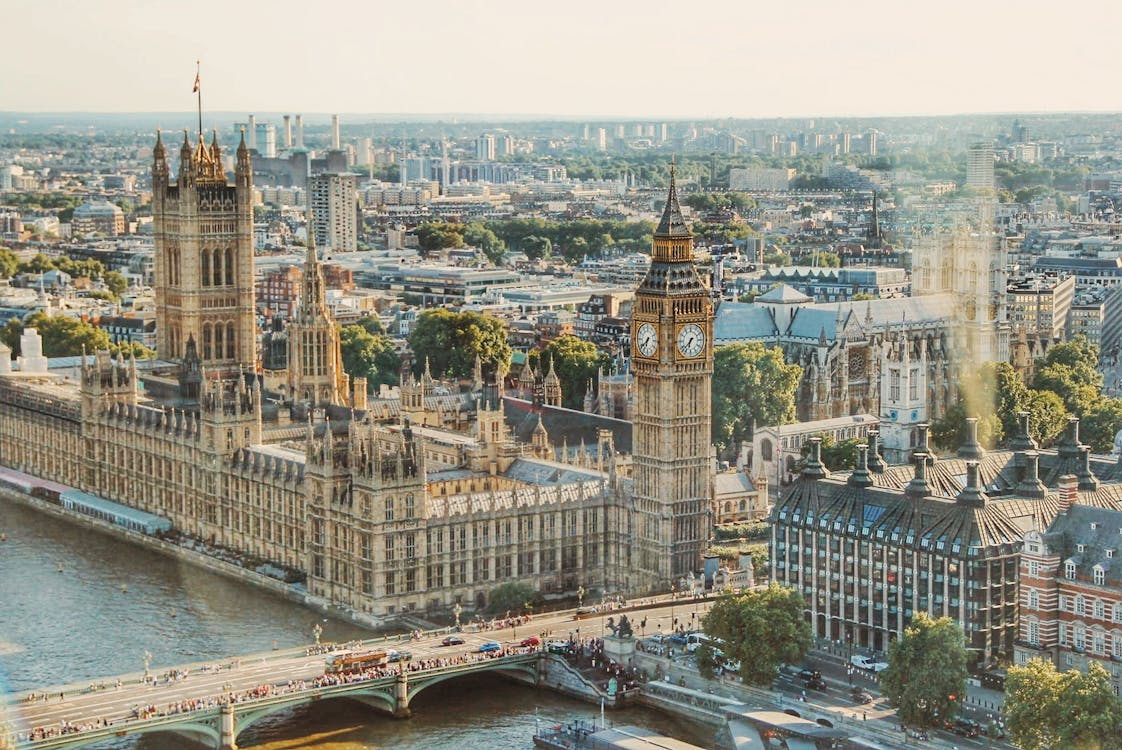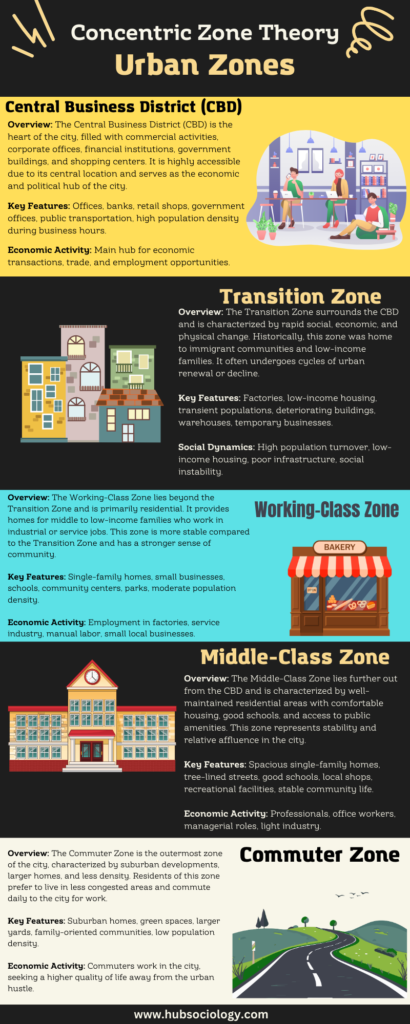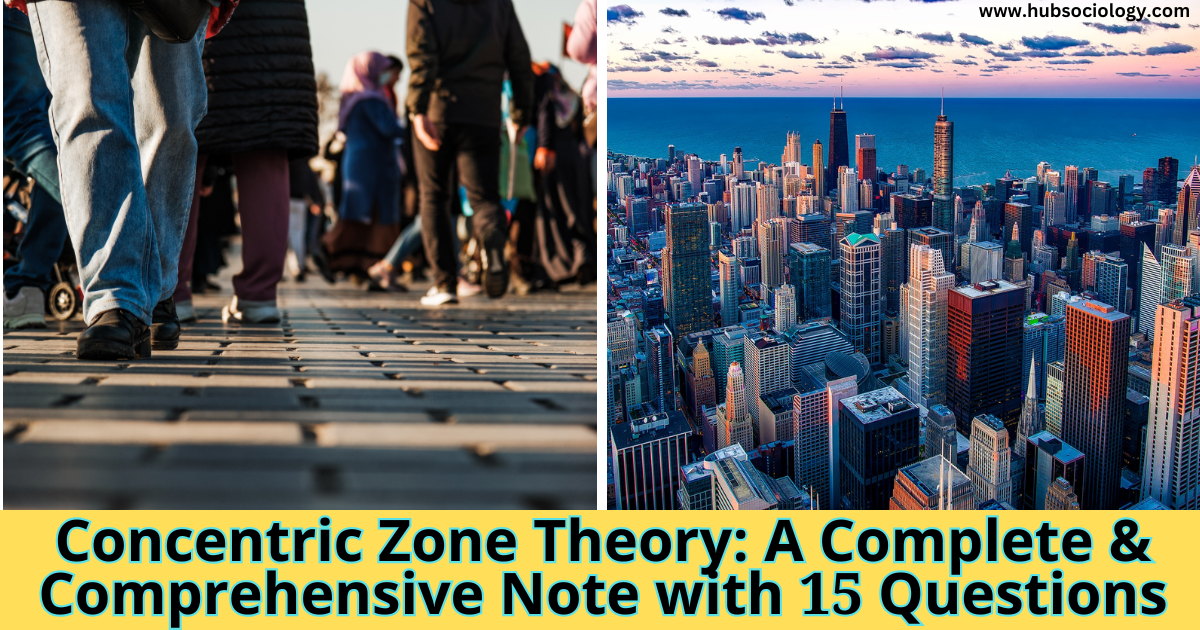Introduction
The Concentric Zone Theory, introduced by sociologist Ernest Burgess in the early 20th century, offers a groundbreaking perspective on urban sociology. Through the study of Chicago, Burgess observed the spatial patterns of city life and the relationship between socio-economic activities and the geographical distribution of populations. The theory provides a framework to understand the social structure, economic activities, and residential patterns in urban areas. Its implications extend beyond geography, touching upon aspects of human behavior, social organization, and the dynamics of city life.

Origins and Background
Urban Ecology and Social Structure
In the early 1900s, as cities expanded rapidly due to industrialization and urbanization, sociologists began to study the evolving patterns within these urban environments. Urban ecology emerged as a prominent area of study, focusing on how people interact with the environment, how social institutions influence urban development, and how individuals are spatially distributed within cities. Burgess, one of the key figures in this field, sought to examine these patterns using a scientific and systematic approach.
Burgess was particularly inspired by the works of geographers and sociologists like Robert Park, Ernest W. Burgess, and Louis Wirth, who studied the relationship between humans and their environment. These scholars believed that cities evolved as organisms, with specific zones acting as distinct ecological niches, each catering to different social and economic groups.
The Structure of the Concentric Zone Model
The Concentric Zone Theory presents the urban landscape as a series of concentric circles radiating outward from the central business district (CBD). Each circle represents a zone with varying socio-economic characteristics, housing types, and land usage. The theory is divided into five distinct zones:

1. Central Business District (CBD)
The center of the city, the CBD, is characterized by commercial activity, financial institutions, corporate offices, and major government buildings. This area is often bustling with economic activity, employment, and is highly accessible due to its central location. The CBD serves as the core of economic and political influence in the city.
2. Transition Zone
Surrounding the CBD is the Transition Zone, also referred to as the Zone in Transition. This zone is often subject to rapid social, economic, and physical change. Historically, it is where immigrant communities first settled when they arrived in the city. Over time, this area might undergo gentrification, decay, or urban renewal.
This zone typically houses poor families, low-income housing, and transient populations. Factories, warehouses, and poorly maintained residential areas dominate this zone. The high population turnover, poverty, and underdeveloped infrastructure contribute to significant social challenges.
3. Working-Class Zone
Next is the Working-Class Zone, where more stable, yet still affordable housing can be found. This area is primarily residential and offers homes for working-class families who commute to jobs in the CBD or nearby industrial districts. The housing is more organized, with single-family homes and small apartment buildings.
The residents here are typically engaged in manual labor or service industry jobs, and the neighborhoods have a stronger sense of community compared to those in the Transition Zone. Schools, small local businesses, and parks emerge in this zone.
4. Middle-Class Zone
Moving further out, the Middle-Class Zone contains more comfortable, well-maintained homes. This zone is characterized by tree-lined streets, single-family homes with yards, and good schools. It represents stability and relative affluence, with a mix of professionals, office workers, and shop owners living here.
Residents in this zone are often employed in managerial, administrative, and technical jobs. The area is well-served by local shops, services, and recreational facilities, fostering a greater sense of permanence and community attachment.
5. Commuter Zone
The outermost zone, the Commuter Zone, represents suburban and rural areas that lie beyond the city. This zone is characterized by larger, more spacious homes, often surrounded by greenery and accessible by roadways. It is primarily residential and caters to people who work in the city but prefer to live in less congested areas.
Inhabitants of this zone commute daily into the city for work and then return home. It attracts those looking for a quieter and more spacious lifestyle, away from the hustle of city life.
Social and Economic Dynamics
The Socio-Economic Divide
Burgess’s theory helps us understand how economic activities shape the urban landscape and influence the distribution of different social classes. The pattern of zones is not just geographical but also social and economic. The transition from one zone to another is indicative of the changing socio-economic conditions:

- Zone 1: CBD attracts wealth, business, and government services.
- Zone 2: Transition Zone is where poverty and migration-related instability occur.
- Zone 3: Working-Class Zone sees stability in work-related housing.
- Zone 4: Middle-Class Zone represents the accumulation of wealth and stability in housing and community.
- Zone 5: Commuter Zone indicates suburban expansion and the pursuit of a higher quality of life, away from urban congestion.
These zones demonstrate that cities do not grow in a random fashion. Instead, they expand in a structured way that reflects socio-economic processes. The movement from poorer to wealthier areas mirrors patterns of upward mobility, whereas the movement from wealthier to poorer areas symbolizes economic decline and decay.
Impacts of Concentric Zone Theory
Urban Change and Development
Burgess’s Concentric Zone Theory has had a profound impact on urban sociology by explaining spatial patterns in terms of human behavior, economic activities, and social stratification. The theory illustrates that cities evolve based on economic necessity, residential preference, and social opportunity. It highlights the importance of economic influence in shaping urban life and demonstrates how different social classes interact with the urban space.
Furthermore, it sheds light on urban decay and gentrification. The shift from middle-class to transition zones and from transition to working-class zones speaks to broader urban renewal or decline processes. Over time, areas that once housed working-class families might face challenges like crime, economic stagnation, or gentrification, leading to new socio-economic dynamics in those neighborhoods.
Criticisms and Limitations
Despite its contributions, the Concentric Zone Theory has faced significant criticism. One of the primary criticisms is that it overemphasizes uniformity and neglects the diversity and complexity found in urban environments. Cities are not simple circles or zones, but rather diverse, multifaceted entities with varying dynamics that change over time due to cultural, political, and economic factors.
- Static Nature: The theory assumes a static and linear progression of urban development, which does not account for sudden economic shifts, government policies, or changing global circumstances.
- Overlook of Socio-cultural Factors: It places significant emphasis on economic and spatial factors, but it lacks consideration for cultural, political, and historical aspects that also shape urban life.
- Limitations in Modern Context: In today’s rapidly evolving urban landscapes, where technology, globalization, and changing social preferences play a significant role, the model may not fully capture the complexity of urban development.
Conclusion
The Concentric Zone Theory offers a foundational framework for understanding the dynamics of urban life, particularly in industrialized cities. It explains how socio-economic activities, human behavior, and spatial distribution interact to create the urban landscape. While it has limitations and has faced criticism, it remains a crucial sociological tool for studying urban environments and the social structures that underpin them.
In today’s cities, Burgess’s insights help sociologists, urban planners, and policymakers understand the evolving urban landscape—how people live, work, and interact within specific spatial contexts. Through a detailed analysis of zones, we can better grasp the relationship between economic activity, residential patterns, and social stratification, offering valuable lessons for the sustainable development of future cities.
Related Questions:-
5-Marks Questions:
- What is the Central Business District (CBD) in the Concentric Zone Theory, and what activities dominate this area?
- Explain the key characteristics of the Transition Zone in Burgess’s Concentric Zone Theory.
- Describe the Working-Class Zone in the Concentric Zone Theory and its typical residential setup.
- What defines the Middle-Class Zone in urban areas according to Burgess’s model?
- Outline the features of the Commuter Zone in the Concentric Zone Theory.
10-Marks Questions:
- Explain the Concentric Zone Theory and describe how cities grow according to Burgess’s model.
- Discuss the socio-economic implications of the Transition Zone in urban areas based on the Concentric Zone Theory.
- How does the Concentric Zone Theory explain the spatial distribution of different social classes in cities?
- Analyze the role of economic activities in shaping urban zones according to the Concentric Zone Theory.
- Explain how urban decay and gentrification can be linked to the Transition Zone in Burgess’s Concentric Zone model.
15-Marks Questions:
- Critically analyze the Concentric Zone Theory and discuss its relevance in understanding modern urban development. What are the key criticisms of the theory?
- Discuss the transition from one zone to another in the Concentric Zone Theory and explain how socio-economic factors influence this change.
- Examine how the Concentric Zone Theory reflects the socio-economic and spatial organization of cities in the early 20th century. How can it be applied to modern urban planning?
- Compare and contrast the Middle-Class Zone and Commuter Zone in Burgess’s Concentric Zone Theory in terms of residential characteristics and socio-economic status.
- Assess the impact of industrialization and urbanization on the growth of different zones in the Concentric Zone Theory. How do these processes affect residential patterns and economic activities?

1 thought on “Concentric Zone Theory: A Complete & Comprehensive Note with 15 Related Questions”